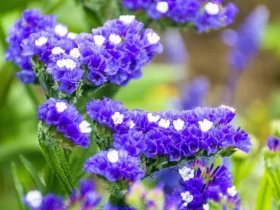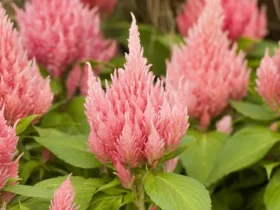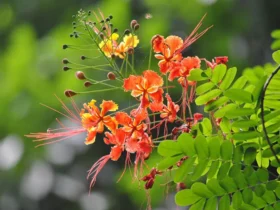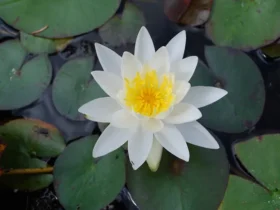In the enchanting world of flowers, the forget-me-not (genus Myosotis) holds a special place. Known for its dainty blossoms and vibrant blue hues, this charming flower has captured the hearts of many gardeners and nature enthusiasts. Join us as we explore the captivating world of the forget-me-not flower, delving into its appearance, symbolism, cultural significance, and the reasons why it continues to be cherished and adored.
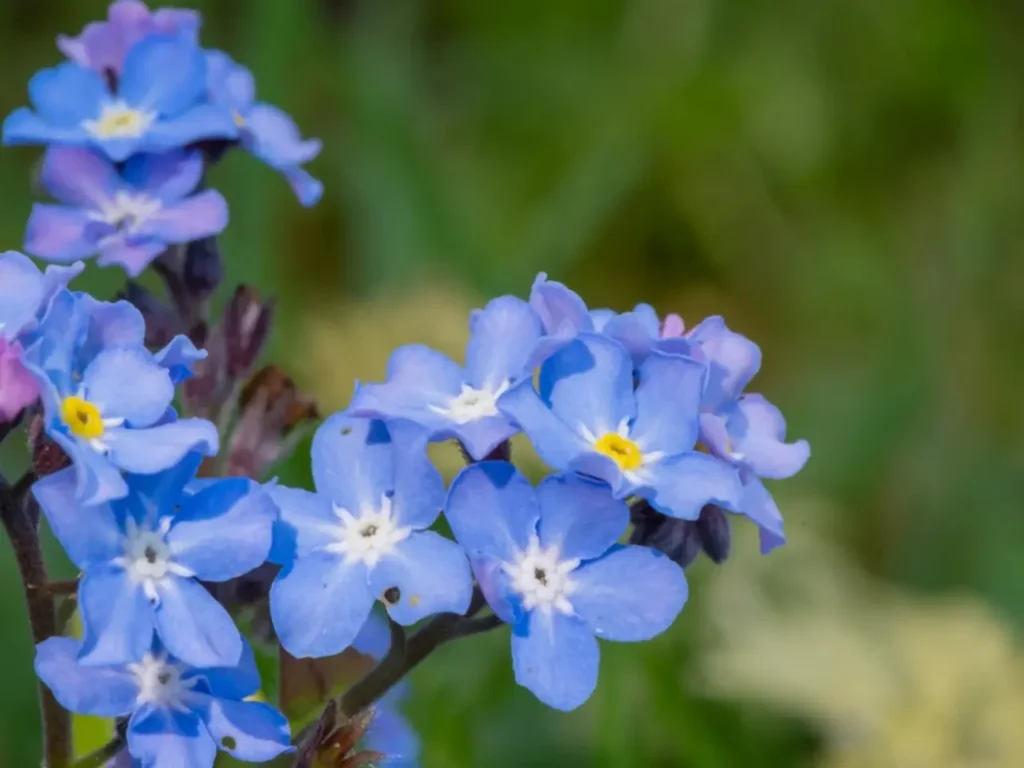
Appearance and Symbolism
The forget-me-not flower is characterized by its delicate beauty and enchanting colors. Its small, five-petaled blossoms form clusters atop slender stems. While most commonly associated with shades of blue, forget-me-nots can also appear in soft pink, white, or lavender hues. The petals boast a delicate texture, while the center of the flower often features a contrasting yellow or white eye. These diminutive blooms are known for their charm and evoke a sense of tenderness and nostalgia.
The forget-me-not holds deep symbolic meaning across various cultures. It represents remembrance, true love, and eternal bonds. Legend has it that in medieval times, a knight fell into a river while picking flowers for his lover. Before he was swept away, he threw her a bouquet and called out, “Forget me not!” Since then, the flower has become a symbol of enduring love and loyalty, reminding us to cherish our connections and memories.
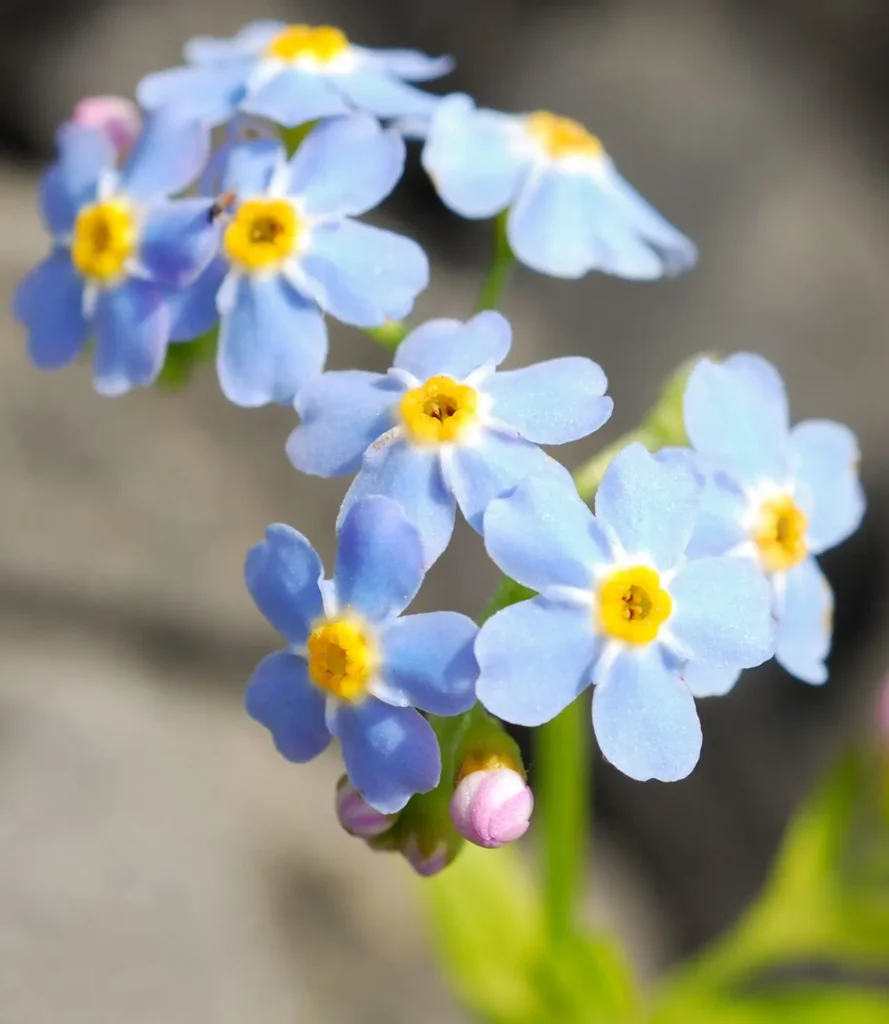
Cultural Significance and Traditions
The forget-me-not flower has woven itself into various cultural traditions and folklore. In Germany, it is associated with the legend of two lovers parting ways, and it is believed that wearing or gifting forget-me-nots can help ensure a reunion. In some cultures, the flower is considered a token of remembrance for loved ones who have passed away, and it is often included in funeral arrangements or planted in memorial gardens. Its gentle presence offers solace and serves as a reminder to keep cherished memories alive.

Gardening and Conservation
Forget-me-nots are easy to cultivate, making them popular choices for home gardens and landscaping. They thrive in moist soil and prefer partial shade, although they can tolerate some sun. As biennial or short-lived perennials, forget-me-nots self-seed readily, ensuring their return year after year. These flowers not only add a touch of whimsy and color to gardens but also attract pollinators such as bees and butterflies, contributing to the overall health of local ecosystems.
From a conservation perspective, it is important to preserve native species of forget-me-nots, as they play a role in supporting biodiversity and are often key components of native plant communities. Some forget-me-not species are at risk due to habitat loss and invasive species. Conservation efforts focus on protecting natural habitats and promoting the cultivation of native varieties to maintain the delicate balance of ecosystems.
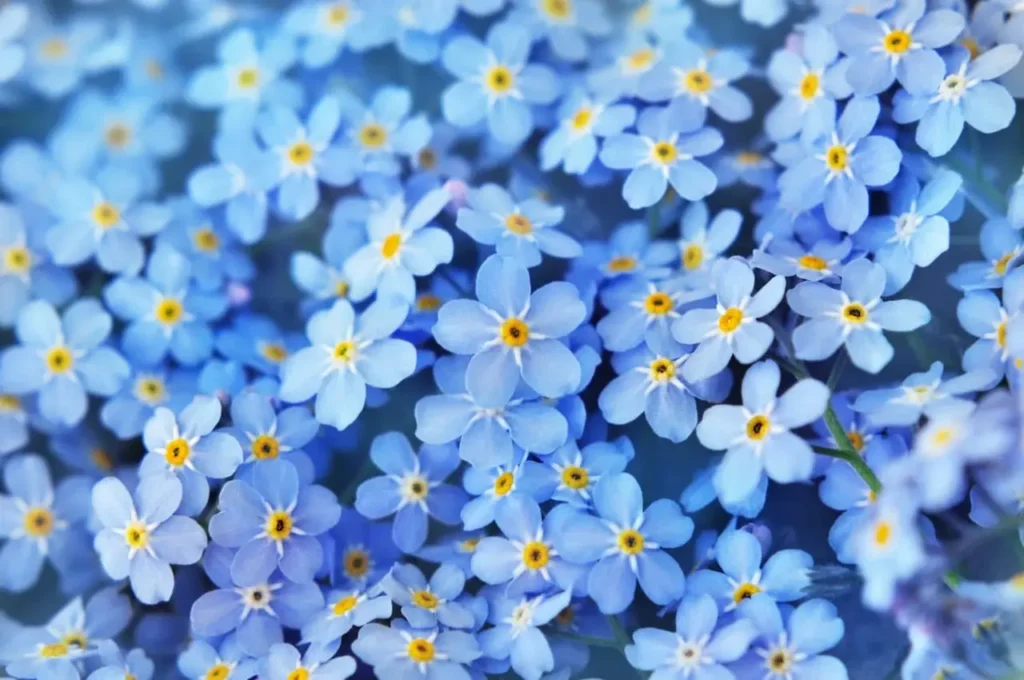
Appreciating the Delicate Beauty
The forget-me-not flower’s delicate allure and rich symbolism make it a beloved and cherished bloom. Its presence in gardens, bouquets, and symbolic gestures evokes feelings of warmth, love, and remembrance. Whether adorning a loved one’s grave or brightening up a corner of the garden, forget-me-nots serve as gentle reminders of cherished memories and enduring connections.


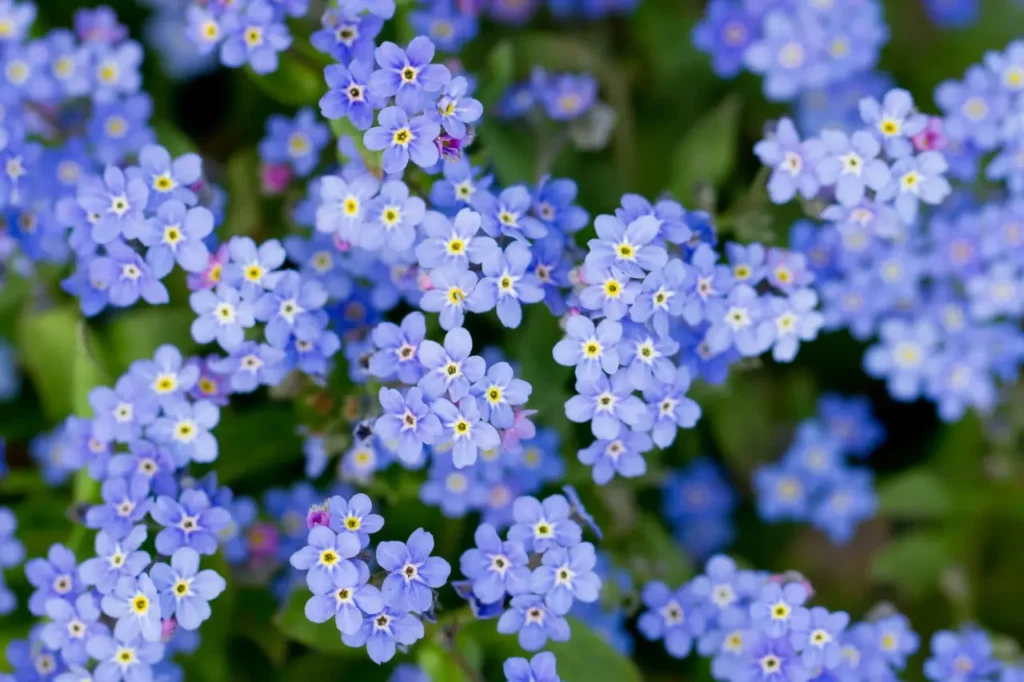
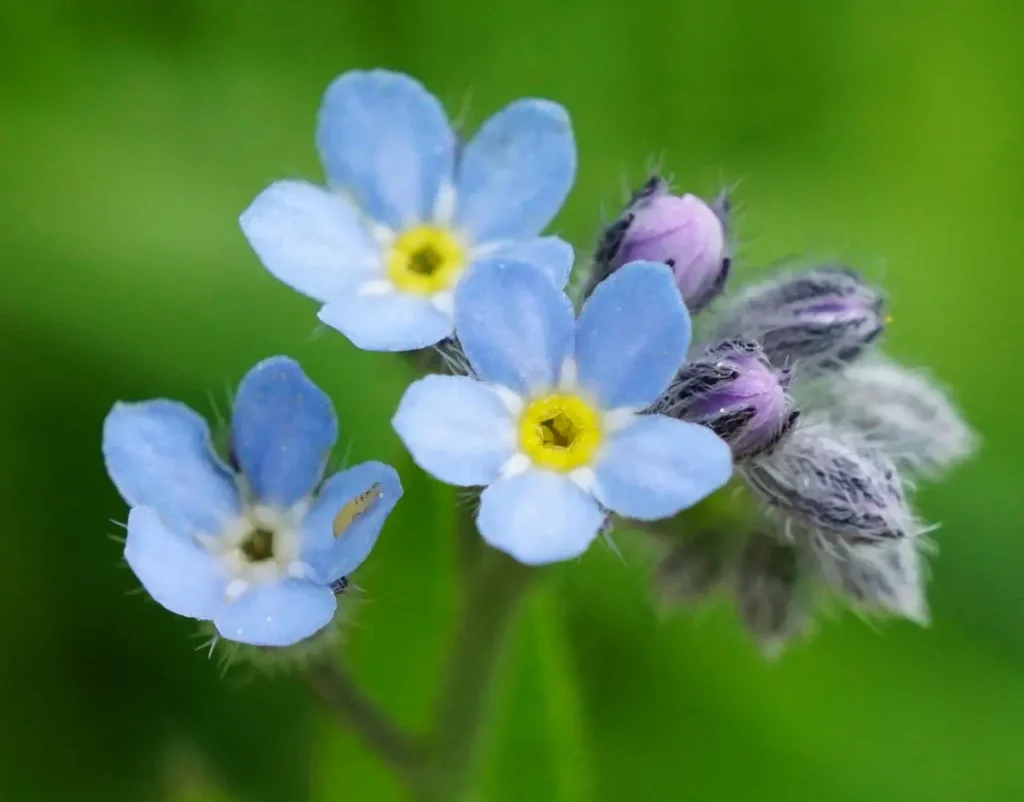
The forget-me-not flower, with its delicate blossoms and poignant symbolism, touches the heart and soul of those who encounter it. Its rich history, cultural significance, and delicate beauty make it an enchanting and cherished part of the floral kingdom. Let us embrace the spirit of the forget-me-not, cherishing our connections, honoring our memories, and cultivating a deep appreciation for the fragile and fleeting beauty that surrounds us.
Despite their small size, forget-me-nots have a big impact both as a symbol of love and remembrance and as a beautiful addition to any garden or landscape. Whether you choose to grow them for their meaning or simply for their beauty, these delicate and charming wildflowers are sure to make a lasting impression.
What is Forget-me-not?
Forget-me-not is a delicate and charming wildflower prized for its beautiful blue flowers and rich symbolism. It is part of the Boraginaceae family, which includes other well-known plants like borage and comfrey.
Diversity: Forget-me-not belongs to the genus Myosotis which includes over 150 species that are mostly native to Europe and Asia but have been introduced to other parts of the world as well.
Growth habit: They are hardy perennials or annuals, depending on the species. Forget-me-nots vary in size, with some species growing up to 2 feet (60 cm) tall and others only reaching a few inches in height.
Flowers: Forget-me-nots have clusters of tiny, delicate flowers that are typically blue but can also be pink or white.
Bloom time: They typically bloom in the spring or summer. Forget-me-nots can bloom for several weeks, providing a long-lasting source of color and beauty in your garden.
Pollinators: Forget-me-nots are known to attract bees, butterflies, and other pollinators to your garden, making them a great addition to any pollinator garden.
Uses: Forget-me-nots are adaptable and can grow in a wide range of soils and environments. They are commonly used in borders, rock gardens, and woodland gardens and are also used in traditional medicine for their diuretic and anti-inflammatory properties.
Self-seeding: Forget-me-nots are prolific self-seeders, meaning they will readily reseed themselves in your garden year after year without any effort on your part.
Low-maintenance: Forget-me-nots are relatively easy to grow and require minimal care, making them a great choice for busy gardeners or those new to gardening.
Hardiness: Forget-me-not (Myosotis) is a hardy plant that can grow in USDA zones 3 to 9. However, the exact hardiness of the plant can depend on the specific species and cultivar. Some species, such as wood forget-me-not (Myosotis sylvatica), are hardy to USDA zones 3 to 8, while others, like water forget-me-not (Myosotis scorpioides) can tolerate higher temperatures and are hardy to USDA zones 5 to 9.
Forget-me-not and Symbolism
In terms of symbolism, forget-me-nots are most commonly associated with remembrance, true love, and faithfulness. They are often given as a gift to loved ones who are leaving on a journey or moving away, as a way of expressing a desire to stay connected and remember each other even when they are apart. In this context, forget-me-nots are also sometimes associated with homesickness or missing someone who is far away.
Forget-me-nots are the official flower of the state of Alaska.
Forget-me-not in History
The history of the forget-me-not as a symbol of remembrance and love can be traced back to medieval Europe, where it was believed that wearing a sprig of the flowers would ensure that the wearer would never be forgotten by their loved ones. This tradition was later popularized by the Germanic legend of a knight and his lady, in which the knight throws a bouquet of forget-me-nots to his love as he falls into a river and drowns. In this story, the flowers represent his last words to his beloved, asking her to remember him always.
Forget-me-nots are also associated with several notable figures and events throughout history. They were a favorite flower of Queen Victoria, who wore them often and even used them in her wedding bouquet. They are also associated with the Freemasons, who have adopted the forget-me-not as a symbol of their philanthropic work and dedication to charity.
Is Forget-me-not Invasive?
Some species of forget-me-nots are considered invasive in certain regions.
One of the unique features of forget-me-nots is their ability to self-seed and spread easily. This can be both a blessing and a curse, depending on how you look at it. On the one hand, it means that forget-me-nots can quickly form large, beautiful patches of flowers that are easy to care for and maintain. On the other hand, it also means that they can sometimes become invasive and take over areas where they are not wanted.
Why Should I Grow Forget-me-not Flowers?
Forget-me-nots are a great addition to any garden or landscape for several reasons. Firstly, they are relatively easy to grow and care for, making them a good choice for beginner gardeners.
Secondly, their delicate blue or pink flowers provide a pop of color to any garden or landscape, and they are known for attracting bees, butterflies, and other pollinators.
Additionally, forget-me-nots are versatile and can be used in a variety of settings, from borders and edging to groundcovers and woodland gardens.
They also have a rich cultural history and are associated with love, remembrance, and the enduring power of friendship.
Overall, forget-me-nots are a beautiful and meaningful addition to any garden or landscape.
Popular Forget-me-not Varieties
There are several popular species of Forget-me-not, including:
Myosotis sylvatica – this is the most common species of Forget-me-not, also known as Woodland Forget-me-not. It is a hardy perennial that is native to Europe and Asia and blooms in the spring.
Myosotis scorpioides – also known as Water Forget-me-not, this species is native to Europe and Asia and grows well in wet areas like ponds or stream banks.
Myosotis alpestris – also known as Alpine Forget-me-not, this species is native to the Alps and other mountainous regions of Europe. It is a hardy perennial that blooms in the summer.
All of these species are known for their beautiful blue flowers and delicate, airy appearance. They can be used in a variety of settings, including wildflower meadows, borders, and rock gardens.
Where to Plant Forget-me-not
Sunlight: Forget-me-nots prefer to grow in partially shaded areas that receive some direct sunlight in the morning or evening. They can tolerate full sun in colder climates.
Soil: They thrive in moist, well-drained soil.
Placement: Forget-me-nots are often found growing along streams, ponds, and other bodies of water. They can also be planted in containers or used as border plants in shaded garden beds. Here are some tips for incorporating them into your garden:
Plant them in borders: Forget-me-nots can create a beautiful border around other plants or along a pathway. They can add a splash of color to your garden and attract pollinators like bees and butterflies.
Use them in rock gardens: Forget-me-nots are small and delicate, making them a great addition to rock gardens. They can fill in the gaps between rocks and create a natural look.
Plant them in containers: Forget-me-nots can be planted in containers and placed on your patio or deck. They are perfect for adding a pop of color to small spaces.
Combine them with other plants: Forget-me-nots look great when combined with other spring-blooming plants like tulips, daffodils, and crocuses. They can also be combined with other perennials like hostas and ferns.
Let them naturalize: Forget-me-nots can naturalize and spread throughout your garden. If you have a large area that needs to be filled in, forget-me-nots can be a great option.
When to Plant Forget-me-not Flowers?
Forget-me-nots can be planted either in the fall or in the early spring.
In areas with mild winters, they can be planted in the fall.
In colder climates, it is best to plant them in early spring, as soon as the soil can be worked. This will allow the plants to establish a good root system before the hot summer weather arrives. Alternatively, you can start seeds indoors 8 to 10 weeks before the last frost date.
It is also possible to plant forget-me-nots in late spring or early summer, but they may not bloom until the following year.
How to Plant Forget-me-not
Here are the steps to plant forget-me-not flowers:
Choose a location: Forget-me-nots prefer cool and moist soil in partial shade.
Prepare the soil: Till the soil to a depth of 6-8 inches (15-20 cm) and remove any rocks or debris. Add organic matter like compost or well-rotted manure to the soil and mix it well.
Sow the seeds: Scatter the seeds over the prepared soil and lightly press them into the soil.
Water the seeds: Water the seeds thoroughly after planting and keep the soil consistently moist until the seeds germinate. Avoid overwatering as it can lead to rotting.
By following these steps, you can easily plant forget-me-nots and enjoy their delicate and beautiful flowers.
Caring for Forger-me-not Flowers
Here are some tips for caring for forget-me-not flowers:
Watering: Keep the soil consistently moist but not waterlogged. Water the plants regularly during dry spells or when the top layer of soil feels dry to the touch.
Fertilizing: Forget-me-nots do not require heavy fertilization. You can apply a balanced, all-purpose fertilizer once or twice during the growing season to promote healthy growth.
Deadheading: To prolong blooming, remove spent flowers by cutting off the entire flower stem at the base. This encourages the plant to produce more blooms.
How to Propagate
Forget-me-nots can be propagated by either seed or division. Here are the steps for each method:
Propagation by Seed:
- Collect the seeds from mature forget-me-not plants when the flowers begin to fade, and the seed capsules start to turn brown.
- Store the seeds in a cool, dry place until you are ready to plant them.
- Prepare the soil by raking it smoothly and removing any weeds or debris.
- Scatter the seeds over the prepared soil and lightly press them into the ground. Cover them with a thin layer of soil.
- Water the area gently to moisten the soil.
- Keep the soil consistently moist until the seeds germinate and the seedlings are established.
Propagation by Division:
- Dig up the forget-me-not plant in early spring before it starts to grow.
- Gently pull apart the root clumps into smaller sections.
- Replant the smaller sections immediately into their new location.
- Water the area gently to settle the soil around the new plants.
- Keep the soil consistently moist until the plants are established.
Remember to always wear gloves and follow proper safety measures when handling plants, especially if you have sensitive skin or allergies.
Pests and Diseases
Forget-me-not flowers are generally disease-resistant and relatively pest-free. However, they can still fall victim to a few common pests and diseases, including:
Aphids: These small, sap-sucking insects can damage the leaves and flowers of forget-me-nots. They can be controlled with insecticidal soap or neem oil.
Botrytis blight: A fungal disease that causes brown spots on the leaves and stems of the plant. This can be prevented by avoiding overhead watering and ensuring good air circulation.
Powdery Mildew: A fungal disease that results in a white, powdery coating on the leaves and stems of the plant. This can be prevented by ensuring adequate air circulation around the plants and avoiding overhead watering.
Slugs and Snails: These pests can damage the leaves and stems of forget-me-nots, particularly when conditions are damp. To prevent infestations, apply slug and snail bait or set up physical barriers like copper tape or diatomaceous earth.
Overall, forget-me-nots are relatively low-maintenance plants and are not commonly affected by pests or diseases. Regular monitoring and proper care can help keep these issues at bay.
Companion Plants for Forget-me-not
Forget-me-nots are a popular addition to any garden and can be easily paired with other plants to create a stunning display. Some great companion plants for forget-me-nots include:
Daffodils: With their bright yellow color, daffodils provide a beautiful contrast to the blue hues of forget-me-nots.
Tulips: Tulips come in a variety of colors and can be used to complement or contrast the shades of forget-me-nots.
Hostas: Hostas provide a lush green backdrop to the delicate flowers of forget-me-nots.
Bleeding Heart: The pink and white blooms of bleeding heart complement the blue flowers of forget-me-nots.
Primroses: Primroses add a splash of color to any garden and look great when paired with forget-me-nots.
Iris: Irises come in a range of colors and add height to a garden bed when paired with low-growing forget-me-nots.
Pansies: Pansies provide a burst of color and can be used to create a border around forget-me-nots.
Columbine: With their delicate, bell-shaped flowers, columbines are a great companion plant for forget-me-nots.
Remember to choose plants that have similar growing conditions and soil preferences to ensure a healthy and thriving garden bed.
Frequently Asked Questions
What is the meaning behind forget-me-nots?
The meaning behind forget-me-nots is generally associated with remembrance, love, and faithfulness. In the Victorian era, forget-me-nots were often given as a symbol of true love and devotion, and were exchanged between sweethearts as a pledge to remember each other. They have also been used to commemorate loved ones who have passed away. In more modern times, forget-me-nots have also been used as a symbol of support for various causes such as Alzheimer’s disease, hospice care, and child abuse prevention.
What is forget-me-not flower good for?
Forget-me-not flowers are mainly grown for their ornamental value in gardens and landscapes. They are also commonly used as cut flowers in bouquets and floral arrangements. Additionally, forget-me-nots have been used in traditional medicine as a treatment for various ailments such as respiratory problems, headaches, and digestive issues. The flowers and leaves of the plant have also been used as a natural dye for fabrics, with shades ranging from blue to purple. In some cultures, forget-me-nots are also used as a symbol of remembrance, often worn or used in ceremonies to honor loved ones who have passed away.
What are some fun facts about forget-me-nots?
- Forget-me-nots are the official flower of the state of Alaska.
- Forget-me-nots have been used for centuries in folk medicine for various ailments, including respiratory issues and inflammation.
- In medieval times, forget-me-nots were believed to have magical properties and were used in love potions.
- Forget-me-nots are a symbol of remembrance and are often used in funerals and memorials.
- In some cultures, forget-me-nots are given as a symbol of true love and fidelity
Is a forget-me-not a violet?
Forget-me-nots and violets are two different flowers. Forget-me-nots are small, delicate, blue flowers with yellow centers that belong to the genus Myosotis, while violets are typically larger flowers with five petals that can range in color from blue-violet to white or yellow and belong to the genus Viola. So, forget-me-nots are not violets.


